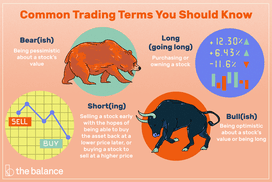
If you are looking for free stock trading courses, there are a number of options available. This article will briefly touch upon several of them: IIM Bangladore, LearnVern, Bulls on Wall Street, and Udemy. Each of these have their advantages and disadvantages. Make sure that you're comfortable with which one you choose before making a decision.
IIM Bangladore
An online stock market course is available to students interested in investing. The course teaches students about stock market basics and investing strategies. This course helps students understand technical analysis and identify market trends. It covers many important topics, including technical analysis and fundamental analysis. You can also take advantage of the 50 supplementary videos and the full-length test.
This course online is meant to introduce beginners to the stock exchange. It consists of 9 lessons covering 10 topics. Each lesson ends in a summary with additional materials. The course also offers a free virtual trading account for students to practice trading stocks in real time. This account is free to use until students feel confident. The course teaches the fundamentals of the stock market. This includes how earnings are calculated and how charts can be interpreted.

LearnVern
LearnVern offers free stock trading courses for those who are interested in getting into the stock market. Its courses are taught by experts with years of experience in the industry. These courses provide detailed guidance on trading stocks and setting up accounts. These courses are industry relevant and can be easily completed on any device.
LearnVern courses are industry-relevant, despite the fact that there are some online courses with more content than others. These modules provide information about different trading strategies as well as how to assess the risks. They cover chart patterns and risk management, technical analysis techniques, and chart patterns. The courses include practical training in vocabulary and techniques for the trading floor.
Bulls on Wall Street
Bulls on Wall Street stock trading courses are designed to teach you how to trade in the market. They are targeted at new traders and offer mentorship, material, and a friendly trading community. Their greatest strength is their extensive video content. This is a great feature for traders who don't have the time or desire to read through books or take live classes.
Bulls On Wall Street stock trade courses online are absolutely free. But, it does require that you do your homework. You must be disciplined and dedicated throughout the learning process. You cannot expect to achieve overnight success using this system. Most of its readers aren't disciplined enough to work for it. They look at email gurus and seminar videos for guidance, but they don’t take the time to actually study and follow through.

Udemy
Being a stock trader has many benefits. The demand for skilled traders is growing. A lot of companies are searching for financial advisors and investment planners. This makes it extremely useful for job searches. These courses are completely free and will provide you with a solid understanding of the stock market.
An online course in stock trading can help you understand the basics of investing. The course will teach you how evaluate your portfolio's performance as well as identify your own biases. The course will also provide tips on how to choose stocks for a portfolio and which types of brokers to use.
FAQ
What are the 4 types?
The main four types of investment include equity, cash and real estate.
Debt is an obligation to pay the money back at a later date. It is commonly used to finance large projects, such building houses or factories. Equity is when you purchase shares in a company. Real estate is land or buildings you own. Cash is the money you have right now.
You become part of the business when you invest in stock, bonds, mutual funds or other securities. Share in the profits or losses.
Do I really need an IRA
An Individual Retirement Account is a retirement account that allows you to save tax-free.
You can save money by contributing after-tax dollars to your IRA to help you grow wealth faster. They provide tax breaks for any money that is withdrawn later.
IRAs can be particularly helpful to those who are self employed or work for small firms.
Many employers also offer matching contributions for their employees. If your employer matches your contributions, you will save twice as much!
What if I lose my investment?
Yes, you can lose all. There is no such thing as 100% guaranteed success. There are however ways to minimize the chance of losing.
Diversifying your portfolio is a way to reduce risk. Diversification spreads risk between different assets.
You can also use stop losses. Stop Losses let you sell shares before they decline. This decreases your market exposure.
Finally, you can use margin trading. Margin Trading allows to borrow funds from a bank or broker in order to purchase more stock that you actually own. This increases your profits.
Statistics
- According to the Federal Reserve of St. Louis, only about half of millennials (those born from 1981-1996) are invested in the stock market. (schwab.com)
- As a general rule of thumb, you want to aim to invest a total of 10% to 15% of your income each year for retirement — your employer match counts toward that goal. (nerdwallet.com)
- Most banks offer CDs at a return of less than 2% per year, which is not even enough to keep up with inflation. (ruleoneinvesting.com)
- An important note to remember is that a bond may only net you a 3% return on your money over multiple years. (ruleoneinvesting.com)
External Links
How To
How to invest stocks
Investing is one of the most popular ways to make money. It is also considered one of the best ways to make passive income without working too hard. You don't need to have much capital to invest. There are plenty of opportunities. You just have to know where to look and what to do. The following article will teach you how to invest in the stock market.
Stocks are shares that represent ownership of companies. There are two types: common stocks and preferred stock. Prefer stocks are private stocks, and common stocks can be traded on the stock exchange. Public shares trade on the stock market. They are priced based on current earnings, assets, and the future prospects of the company. Investors buy stocks because they want to earn profits from them. This process is called speculation.
Three steps are required to buy stocks. First, determine whether to buy mutual funds or individual stocks. Next, decide on the type of investment vehicle. Third, decide how much money to invest.
Select whether to purchase individual stocks or mutual fund shares
Mutual funds may be a better option for those who are just starting out. These portfolios are professionally managed and contain multiple stocks. Consider the level of risk that you are willing to accept when investing in mutual funds. Some mutual funds have higher risks than others. If you are new to investments, you might want to keep your money in low-risk funds until you become familiar with the markets.
If you prefer to invest individually, you must research the companies you plan to invest in before making any purchases. You should check the price of any stock before buying it. The last thing you want to do is purchase a stock at a lower price only to see it rise later.
Select Your Investment Vehicle
Once you've made your decision on whether you want mutual funds or individual stocks, you'll need an investment vehicle. An investment vehicle is simply another method of managing your money. You can put your money into a bank to receive monthly interest. You could also open a brokerage account to sell individual stocks.
A self-directed IRA (Individual retirement account) can be set up, which allows you direct stock investments. Self-Directed IRAs are similar to 401(k)s, except that you can control the amount of money you contribute.
Selecting the right investment vehicle depends on your needs. Are you looking to diversify or to focus on a handful of stocks? Do you seek stability or growth potential? How comfortable are you with managing your own finances?
The IRS requires investors to have full access to their accounts. To learn more about this requirement, visit www.irs.gov/investor/pubs/instructionsforindividualinvestors/index.html#id235800.
You should decide how much money to invest
It is important to decide what percentage of your income to invest before you start investing. You can put aside as little as 5 % or as much as 100 % of your total income. Your goals will determine the amount you allocate.
It may not be a good idea to put too much money into investments if your goal is to save enough for retirement. However, if your retirement date is within five years you might consider putting 50 percent of the income you earn into investments.
It is crucial to remember that the amount you invest will impact your returns. Before you decide how much of your income you will invest, consider your long-term financial goals.